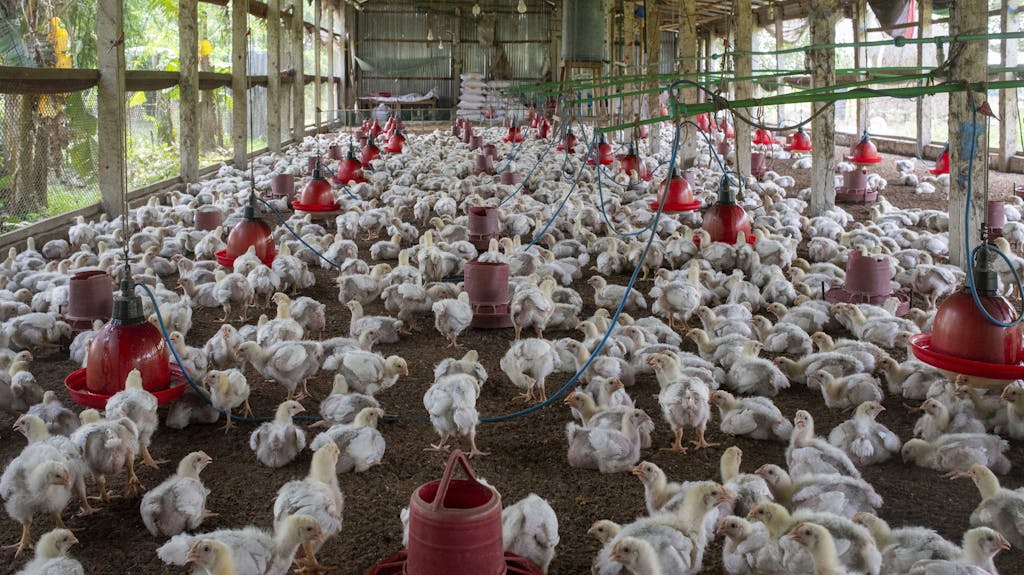
Terrifying H5N1 Bird Flu Surge: A Rising Threat in the US
Have you been following the news about the Terrifying H5N1 Bird Flu Surge? Lately, it seems like bird flu updates are everywhere. Reports of h5n1 bird flu deaths are popping up in multiple states, and people are understandably concerned. You might even know someone who is worried about every sniffle or cough, fearing the worst. But how serious is this situation, really? Let’s dig into the facts and see what we can learn from experts and recent events.
First, what is bird flu? Bird flu, also called avian influenza, is an infectious virus that mainly spreads among birds. One strain, H5N1, can occasionally jump to humans. When it does, it can lead to severe flu-like symptoms. Doctors commonly refer to these as bird flu symptoms: fever, cough, sore throat, and body aches. But in some cases, it can quickly escalate to pneumonia or worse. The high death rate in severe outbreaks is what triggers alarm whenever we hear news of a bird flu death.
Some folks may recall earlier scares when mass culls took place on poultry farms. That was an attempt to limit h5n1 bird flu from spreading. However, the Terrifying H5N1 Bird Flu Surge we’re seeing now includes a worrying twist. In certain places, like Louisiana, officials confirmed at least one Louisiana bird flu death in a human. This got the attention of the Centres for Disease Control and Prevention (CDC). They are monitoring the situation closely and working with local health departments to track how and where the infection may have spread.
What’s truly concerning about H5N1 is its potential to mutate. So far, the number of bird flu deaths in humans has been relatively low in the United States. Most infections occurred in people who had direct contact with sick birds. But each new mutation of the virus could pose a greater threat to everyone. The fear is that one day, it might become more contagious among humans. That possibility makes each bird flu death and each mention of a Terrifying H5N1 Bird Flu Surge feel like a ticking clock.
In the poultry industry, this situation has led to huge financial losses. Farmers have to kill large numbers of birds to stop the spread. Some experts estimate that tens of millions of birds were culled over the past couple of years in response to H5N1. That’s not just bad for farmers’ livelihoods. It also disrupts food supply chains, affects prices at grocery stores, and can spark panic among consumers. All it takes is another scary headline about h5n1 bird flu deaths for shelves to empty of poultry products.
Historically, whenever there’s an outbreak, the CDC urges the public to stay informed but not to panic. They recommend everyday hygiene measures like washing your hands thoroughly after handling raw chicken or eggs. Cooking poultry to safe temperatures also helps kill the virus. That said, as the Terrifying H5N1 Bird Flu Surge draws more attention, people naturally wonder if more drastic steps are coming. Could we see travel advisories, school closures, or new vaccine mandates if the virus becomes more widespread in humans?
For now, scientists are busy researching better vaccines that target h5n1 specifically. Current flu shots don’t always cover these more unusual strains. Creating a custom vaccine for each new variant can take months—or even years—of careful testing. By the time a vaccine is mass-produced, the virus might have mutated yet again. This unpredictability is part of what makes the Terrifying H5N1 Bird Flu Surge a major concern among epidemiologists and health professionals alike.
One key question keeps coming up: “How can I tell if I have regular flu or bird flu?” Truthfully, bird flu symptoms often look the same in the early stages. Experts recommend seeking medical advice if you develop a high fever and severe respiratory issues, especially after handling birds or visiting a place with a known outbreak. If you think it’s even a remote possibility, talk to a doctor right away. Early detection can make a real difference in outcomes, and it also helps officials track potential clusters before they spiral out of control.
Let’s not forget that the world has faced other flu threats in the past. Some were more serious than others, and we have managed to get through them with a mix of vigilance, scientific progress, and a bit of luck. Still, each bird flu death prompts scientists to dig deeper into genetic changes in H5N1. They’re looking for the slightest hints that this virus could become more adaptable in human hosts. If that happens, the entire conversation around the Terrifying H5N1 Bird Flu Surge would change overnight.
At the end of the day, we can’t live our lives in constant fear. Yes, the mention of h5n1 bird flu deaths can be scary. But remember, most people who got sick had direct contact with infected birds. If you’re not in daily contact with poultry, your risk remains low. Still, it’s wise to stay up to date on any new information. Follow CDC alerts, practice good hygiene, and keep an eye on local news if a wave of bird flu deaths occurs near you. Public awareness is one of our strongest tools for dealing with any infectious threat.
So, what’s next? Experts will keep developing vaccines and monitoring outbreaks. Farmers will continue to take precautions, and health authorities will remain on guard. For the average person, life goes on much the same, but with a little more caution. Whenever you see those headlines about the Terrifying H5N1 Bird Flu Surge, remember that knowledge is power. The more we know about what is bird flu, the less likely we are to be caught off guard. Stay informed, stay calm, and stay safe.
Author
Tahir Aleem



